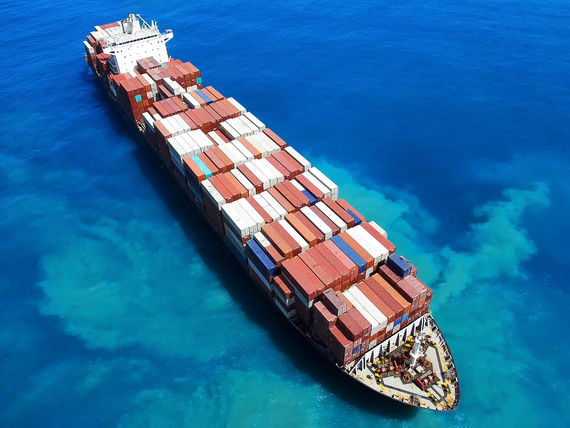Six Benefits of Maximizing Visibility Across a Supply Chain


Steve Budrow, CSCP
VP Customer Success, BridgeNet Solutions
What does supply chain visibility mean in 2024?
When people talk about supply chains, the word visibility is often used. As a result, the term has become diluted. Despite this, the concept has more importance than ever. The usual connotation of the term is often only about tracking and knowing where a particular shipment is located. But visibility in other forms is also necessary for a well-run supply chain.
Creating useful visibility requires a high level of coordination between stakeholders, including customers, carriers, and other suppliers. It’s always a team effort whose benefits reach every part of an organization.
Visibility helps supply chains achieve a lot of great things. Here are six ways most companies can benefit from more transparency.
1. Real-Time Shipment Tracking
Although shipment tracking is often the 'default' when it comes to visibility, it doesn't mean it's not essential. Knowing the whereabouts of materials and products and their expected delivery times is crucial in the supply chain. For this to work, transportation partners and Logistics Service Providers (LSPs) are often counted on to make this possible through technology. Shipment visibility needs to provide the exact location and status of freight in real-time, so companies are able to better plan downstream supply chain activities.
Knowing a location is helpful in many circumstances, but providing an accurate ETA is more critical. Some partners, such as BridgeNet Solutions, leverage AI/ML technology to aggregate various data inputs and provide predictive ETAs that account for the complex factors outside a carrier’s control that can impact arrivals – such as port congestion. This information allows for better planning and coordination throughout the supply chain. Customers value shipment visibility, and this type of transparency not only increases customer satisfaction; it builds trust.

2. Better Inventory Management
Visibility isn’t just important when products are in transit. Equally essential is a real-time look at the quantity, location, and status of inventory levels in warehouses and at manufacturing sites.
Optimizing stock levels is a primary goal of inventory management that can lead to increased cash flow and decreased costs. So, companies must balance having enough inventory to meet customer demand and avoiding the excess warehousing and handling costs associated with too much inventory. Visibility helps make data-driven decisions regarding maintaining the right amount of products and materials.
Having too much or too little product on hand can have negative consequences. Ensuring inventory visibility allows you to monitor stock levels and replenish inventory when necessary proactively.

3. Efficient Cost Management
With a clear view of costs, companies can make better-informed decisions at each point in their supply chains. Daily decisions about shipment modes and carriers to use are impactful, for better or worse, to a company’s logistics costs. The choice is apparent when rates and other cost inputs are available and understood.
Cost visibility can also be enhanced with logistics technology that details the implications of other choices, such as choosing between air or ocean transport or comparing Full Truck Load (FTL) to Less-than Truck Load (LTL) so that the best decisions are made.
Another significant cost factor is transit time. In some situations, a faster delivery may be necessary. But it typically comes at a higher price. Cost visibility allows companies to evaluate the trade-off between expedited and standard shipping costs to help make an informed decision to balance the two priorities. Similarly, distance heavily impacts costs. This makes supplier and warehouse locations important, so network-wide visibility into costs and lead times is necessary for strategic decision-making.

4. Improved Sustainability
There is a significant emphasis on improving supply chain sustainability for logistics service providers and their customers. The good news is many of the cost-saving benefits of visibility also serve to reduce a supply chain’s carbon footprint. Similarly, tracking emissions in quantifiable ways to enable improvement requires transparency of the related data.
Visibility into emissions is necessary to understand the impact of choices companies make. As we all know, air freight comes with a much larger carbon footprint compared to ocean freight on per pound basis. Rail beats truckload in this regard. The location of suppliers relative to manufacturing centers or the proximity of your facilities to end customers all impact the distance shipped and the potential modes you can utilize for delivery. With such visibility, supply chain leaders can make informed decisions that result in improved sustainability.

5. Elevated Service Performance
The ability to track and evaluate the performance of vendors and service providers is another opportunity that comes from visibility. It provides companies with the information necessary to make informed, data-driven decisions about vendors performing above or below expectations.
Common but useful service performance metrics that become quantifiable with the proper visibility include On-Time Delivery (OTD) and On-Time in Full (OTIF). Having visibility into these and other vendor performance data means companies can track and address root causes that are driving recurring issues.
Another key performance-based metric can be tracking OS&D (Overages, Shortages, and Damages) events. Monitoring and recording OS&D issues allows companies to hold vendors accountable for delivery problems they may be causing. These and other accessorial-type expenses help determine the actual cost of working with specific vendors and will help make more cost-effective choices in the future.

6. Compliance & Cost Savings
Clear and centralized insights into global trade performance offers opportunities for companies to improve compliance while creating both direct and indirect cost savings. Such enhanced visibility enables the identification and measurement of key metrics such as the utilization of applicable Free Trade Agreements (FTAs), duty savings, and shipment volumes.
With the proper tools in place, companies can easily audit performance, remain compliant and break down silos. Visibility and compliance deliver financial savings through a more optimized supply chain, process improvements, and accelerated decision-making.

Creating supply chain visibility in all the right areas
The lesson learned should be that visibility is more than just tracking. Establishing broad transparency should be a priority because it enables better cost management and performance improvements at each step in the supply chain.
Companies looking to improve visibility in their operations should choose partners who understand what visibility means and can help attain it. Contact BridgeNet Solutions to learn more about our bespoke 4PL solutions that deliver these benefits and maximize the value of your supply chain.


